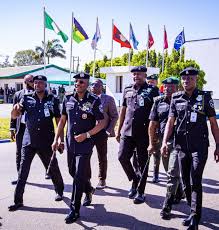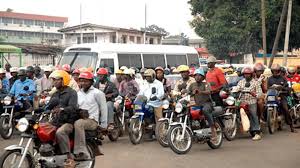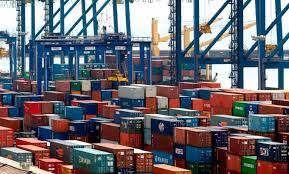Opinion
Corruption As Retrogression
Henry David Thoreau, an American naturalist, wrote, in his book: Walden, Or Life in the Woods (1854) that a man is a fool when he pays too much for what he wants, in terms of what it takes out of his very existence. Our own Dr Goodluck Jonathan would tell us that a man can be corrupt without taking a dime; neither should we consider any man a fool who would say that his personal ambition is not worth the blood of any human being. What we find is that human values and perceptions vary widely, and also represent levels of personal maturity or development.
It was noteworthy and instructive to see President Muhammadu Buhari exchanging pleasantries with former President Jonathan during the 59th Ordinary Session of Authority of Heads of State and Government of ECOWAS in Accra, recently; (ref. The Tide of Monday, August 9, 2021, Page 10). Obviously the concept of corruption has to do more with the state of the mind of an individual, manifesting visibly through personal integrity and empathy. Noble ideals show in the ways that an individual relates with others and also in deeds.
Vice President Yemi Osinbajo, a professor of law, was quoted long ago as wondering why Nigerians had not shown aggressive rage over the issue of corruption in the country, through protests. Nigerian masses know better than taking such pig-headed action because such protest would be dealt with in such vicious manner by the coercive agencies of state in a way to serve as a deterrent and warning. Thus, corruption as a retrogression works through the process of psychological conditioning with fear as a tool.
Origin of retrogressive movements in human history took a long process, with Scholasticism and Materialism standing out as recognisable pillars. During the Middle Ages, scholasticism was enthroned as a mass movement, whereby authority of the church fathers held sway, coupled with hollow intellectualism. The more loquacious and aggressive your disputation, the more your opinion stands as truth. The scriptures would be cited and quoted forward and backward as a weapon to silence rational personal conviction. Thus independent thinking and verification of issues became heresies.
Materialism as a worldview began as a global movement also in the Medieval era, spreading the philosophy that “only things that are apparent to the five senses are real, and that all actions, thoughts and beliefs can be explained by the movements and changes of matter”. Materialist philosophy was an effort to narcotise and hold human consciousness within the limits of quantifiable and provable issues. Thus began a regime of sharpening the faculty of perception to be “objective” in the scrutiny and analysis of issues. This system was also followed by the adoption of war of words to win arguments.
Unfortunately, the scholastic and materialist movements culminated in a rigidity and retrogression of human consciousness, wearing the cloak of an intellectual culture. Frankly, the intellectual culture gave rise to a process of large-scale and pervasive corruption whose domain of anchorage is beyond the physical or taking of bribes. Like former President Jonathan would say, a man can be corrupt without taking a dime. Corruption means retrogression or degeneration in awareness.
Stages of the process of retrogression or degeneration are many, quite slow and not easily recognisable. It begins with an increasing denseness, obtuseness and insensitiveness which manifest in a focus of attention on myopic personal interests. Then there is an absence of empathy with a diminution of the feeling of shame, which manifest in actions of ignoble nature, coupled with an aggressive efforts to defend or excuse such acts. Thus, there is an increasing culture of blustering and duplicity, leading to a widespread social anomie.
Then human perception and values become pressed into narrow and obscure limits such that there is a gross diminution of the reality of issues. With glib talks the smart fellow becomes the winner in arguments that involve deep ethical perception and evaluation. So long as issues are not brought or tabled within the framework of quantifiable and measurable indices, then a case can be dismissed as irrelevant and not deserving any further waste of time on. So the retrogressive process goes on and on.
Human institutions come handy as willing accomplices in the continual diminution of the range of human perception to purely material domain. Since there is no art to tell the mind’s construction on the face, rich garments can be worn to cover and conceal skeletons. Neither are there many people willing to take the pains and a free mind to explore and scrutinise issues or dig deeper than the surface to pick out what is real and true. Thus are we continuously deceived by ornaments, glib talks and threats.
With regards to the plundering and looting of Nigeria’s commonwealth by smart and clever persons, it becomes obvious that politics is also an accomplice in the regressive process. How else do we explain a situation where political parties in power provide protection and immunity to treasury looters as a bait to lure such exposed looters to switch camp! Such looters and destroyers of the economy, despite clever cover-ups, blusters and political protection, must reckon with Nemesis whose verdict can never be influenced by anyone.
Like cancerous growth, the ultimate purpose of corruption as a retrogressive process is the elimination of what is weak, derelict and not fit to serve as an instrument of a fresh up-building. The process is not a physically visible affair but strikes at the root of human consciousness and perception. The visible end-result, which is what we become quite obsessed about, is what cannot be eliminated or cured without addressing the root and origin. What we observe currently is the excrescence of a decayed human condition which takes various guises.
The looting or money-related aspect of corruption is not peculiar or exclusive to Nigeria alone because the phenomenon is a global one, manifesting in various countries according to their political economy. It is obvious that everybody is infected by the cancer whose root lies in human consciousness and perception, but not everybody in the same degree. The devouring plague would have its worst effect with those in the upper extreme. The virus manifests worst in policies which undermine the well-being of the masses. Thus you join the devouring system, as you cannot fight it.
Dr Amirize is a retired lecturer from the Rivers State University, Port Harcourt.
Opinion
Nigeria Police And The “Miscreants” Theory

The “withdrawn” reaction of the Rivers State Police Command to public condemnation of the police antagonism to a recent peaceful protest in Port Harcourt, tagged #Take-IT-Back Movement organised by Civil Society Organisations, the Niger Delta Congress and other concerned groups, leave much to be desired. The Police Public Relations Officer of the Rivers State Command, Grace Iringe-Koko in what seems a brilliant defence to the action of the unprofessional and inordinately ambitious conduct of the policemen had described those whom the police threw cannisters of teargas at, as, “miscreants and thieves”. To say the least, the Channel Television Reporter, Charles Opurum, Allwell Ene of Naija FM, Soibelelemari Oruwari of Nigeria Info, Ikezam Godswill of AIT and Femi Ogunkhilede of Super FM who were among those tear-gassed while discharging their legitimate duties of covering the peaceful protest, could not have been “miscreants” and “thieves”. Such practice of giving people a bad name to whip up public sentiment and hate and give a cosmetic treatment to an exceedingly ugly incident, seems the antics of some men of the Nigeria Police.
Some years ago I remember a trigger- happy police officer had rhetorically asked me, “Do you know I can shoot you here and brand you a criminal”? The question that readily came to my mind was, if a public officer and a professional journalist of several years of practice could be so threatened and branded a criminal, what is the fate of common citizens in society. That lends credibility to the fact that some victims of police brutality and extra-judicial killings are innocent. They are mere victims of circumstances. It is also common experience that men of the Nigeria Police swoop on scenes of crime, arrest some innocent residents of the area, brand them suspects and hurl them in detention for more than 48 hours. Nigeria Police should be more professional enough in their operations, so that innocent people will not suffer humiliation, incarceration and financial losses for bail. Agreed that it is within the statutory obligation of the Public Relations unit to launder the image of its organisation, but it should be done with discretion, and not with utter disregard and disrespect to the sanctity of human lives. Refutal must be factual and truth based.
The public relations or image making service if not done conscientiously can dent the credibility and integrity of a practitioner. No doubt the viral video clips on the police hurling teargas cannisters on peaceful protesters cannot be described as a figment of imagination or an attempt to “incite public anxiety and create unnecessary tension within the State” as stated by the Police Public Relations Officer in her reaction to public condemnation of the action of her colleagues. Though the able and Media-friendly Rivers State Commissioner of Police has apologised to the Nigeria Union of Journalists, Rivers State Council and the assaulted Journalists, for the unprofessional conduct of the policemen who were involved in the Journalists’ brutality, the conduct was, according to the leadership of Rivers State Council of Nigeria Union of Journalists, “barbaric, inhuman and a flagrant disrespect to the rights of the assaulted journalists. Recall that the Rivers State Police Command had described as false, unfounded and baseless, reports that police officers fired teargas on unarmed protesters in an attempt to disperse them.
In the words of the Police Public Relations officer, “Upon receiving intelligence regarding the protest, our officers were promptly deployed to the specified locations. “On arrival, a group of miscreants was observed engaging in criminal acts, including the theft of mobile phones and other valuables from unsuspecting members of the public. “Our operatives responded swiftly, dispersing the individuals. This baseless story appears to be a deliberate fabrication by mischief makers seeking to incite public anxiety and create unnecessary tension within the state.” However, it is time Nigeria Police realised that the right to peaceful protest is legitimate and fundamental. It is enshrined in International rights instruments, including the Universal Declaration of Human Rights (UDHR), the International Covenant on Civil and Political Rights, the African Charter on Human and Peoples’ Rights and domesticated by Nigeria. Section 40 of Nigeria’s Constitution guarantees every citizen the right to assemble freely. The right to peaceful protest is the beauty and a function of democratic governance. It offers the masses the opportunity for self expression and calling erring or a failed government or leadership back to its statutory obligation.
It allows people to publicly voice their concerns, challenge injustices, and participate actively in the democratic process. Protests serve as a vital mechanism for holding leaders accountable and ensuring that government actions reflect the will and needs of the people. The recognition and approval of the right to protest is one action that makes a great difference between a truly democratic government from a repressive, dictatorial and despotic administration. Protest is evident and inevitable in every human institution or organisation from family to school, work places etc, if the heads or the administrators abuse their position and treat with contempt the people on whose prerogative they (leaders) were elected. Some children have also protested against their parents, students protest against wrong administration etc. Protest is therefore, a corrective mechanism, it is expression of a dissenting position against anti-people policies and programmes. The distinctiveness of the Democratic governance over the Military is unreserved and unalloyed respect and regard for the Rule of Law. If the Rule of Law and its implications are undermined, then there is inevitable transition to dictatorship, a military regime in the garb of a civilian administration.
However, the calamitous consequences during the #EndSARS protest and #EndBadGovernance protest show that the respect for the rule of law and its implications remain a far-cry to constitutional requirement. The losses incurred during such protests cannot be consigned to the dusbin of history in a hurry. What is the outcome of the #EndSARS protests and brutality? Nigeria Police and other security agencies should tread with caution on the issue of peaceful protests and treating journalists and innocent members of the public as “miscreants”, and “thieves”.
By: Igbiki Benibo
Opinion
Essence of Easter

It’s another Easter, a day Christians the world over celebrate the resurrection of Jesus Christ from death. At the heart of Easter is the belief that Jesus rose from death on the third day after His crucifixion (as described in the Gospels of Matthew, Mark, Luke, and John). This event is seen as proof that Jesus is the Son of God and that His promises of eternal life are true.The resurrection is seen as Jesus’ victory over sin, death, and the power of evil. His rising means that those who believe in Him are no longer bound by sin or spiritual death but can share in His eternal life. Easter symbolses new life, not just spiritually but in how believers live their daily lives. Just as Christ rose, Christians believe they too can rise from past mistakes, addictions, guilt, or despair, and walk in a “newness of life.” In a world full of suffering, uncertainty, and death, Easter offers hope—the assurance that pain and death do not have the final word. It reminds Christians that no matter how bad things get, there is always the possibility of resurrection, restoration, and new beginnings.
But even beyond the religious narrative, Easter coroborates¹ a universal truth: that suffering is not the end of the story, and that even in the darkest times, renewal is possible. For many Nigerians today, that message feels especially urgent. The economic situation is unbearable. The cost of living has reached painful highs. A bag of rice now costs more than many families earn in a month. Electricity remains unreliable, jobs are scarce, and the dream of a better tomorrow feels distant. Politically, many are disillusioned. Promises come and go like the harmattan wind—loud in arrival, but often empty in effect. Elections have come and gone, but the people’s cries often go unheard. The skyrocketing prices in the markets, currency fluctuations, ever-rising cost of living, unabating insecurity have become the daily realities of many Nigerians. In the past few weeks, the conflict in Plateau and Benue States have reportedly claimed several lives. Thousands of people from the affected communities have fled from their ancestral homes.
Recently, in Uzo-Uwani Local Government Area of Enugu State, about 25 people were reportedly killed, several properties destroyed by insurgents who attacked the agrarian communities. Many other communities in the country have painful stories arising from insecurity. Amid all this, Easter arrives—not merely as a date on the calendar, but as a symbol, a whisper from the heavens that says: this is not the end. As earlier stated, at the very core of Easter is a message of resurrection. For Christians, it is the story of Jesus Christ, who after the pain of the cross and the silence of the tomb, rose again in glory. But beyond the church pews and Sunday services, Easter holds a timeless message for every Nigerian: after suffering comes renewal, after darkness comes light. It reminds us that there is still power in perseverance. That in the same way Christ endured the cross and emerged victorious, we too must hold on—even if just barely—believing that change is possible. Easter calls us to resist the temptation to give in to hopelessness. It urges us to keep pushing, to keep speaking out, to keep believing that Nigeria can rise.
There’s an old Yoruba proverb that says, “Bi iku ile o ba pa ni, t’ode o le pa ni” — “If the threat at home does not kill one, that from outside cannot.” In other words, it is from within that we draw our strength. Despite economic hardship, political frustrations, feeling forgotten by those in power, we as a people should not give up. And that is the essence of Easter. The Bible says in Romans 8:18, “For I reckon that the sufferings of this present time are not worthy to be compared with the glory which shall be revealed in us.” It reminds us that hardship is not permanent. Things can change. We can rise. But Easter is not just a story of survival it is a call to action. Like Jesus’ resurrection, it demands transformation. It asks each of us: What must die in our society so that something better can live? Is it corruption? Is it apathy? Is it greed? And more personally: What must rise in us? integrity? compassion? courage?
Nelson Mandela once said, “Our human compassion binds us the one to the other—not in pity or patronisingly, but as human beings who have learnt how to turn our common suffering into hope for the future.” We must stop waiting for change from the top and start building it from the ground. Whether supporting a struggling neighbor, voting with conscience, speaking the truth in our workplaces, or simply refusing to cheat the next man—these are the small resurrections that will one day lift Nigeria from the grave. As the Igbos say, “Obu onye kwe, chi ya ekwe” — “When one agrees (to something), his spirit agrees also.” If we, the people, agree to rise—to hold onto hope and live with purpose—then even heaven will back our efforts. In a world that often feels heavy with uncertainty, conflict, and division, Easter invites us to pause and reflect. It challenges us to consider how we treat one another, how we face adversity, and whether we still believe in the possibility of transformation. It’s a moment to ask: What needs be resurrected in our own lives? Is it a lost relationship, a forgotten dream, or simply the courage to begin again?
This Easter, let us reflect deeply. Not only on the pain we have endured, but on the promise that lies ahead. Let us pray, yes—but also act. Let us hope but also build. Above all, let us remember: no matter how long the night is, the morning must surely come. Let the message of the empty tomb stir us into action—not out of fear or anger, but out of the same love and sacrifice that Easter celebrates. Because no matter how long the night, the dawn always comes.”Weeping may endure for a night, but joy cometh in the morning.” — Psalm 30:5. Happy Easter, Nigeria.
By: Calista Ezeaku
Opinion
Addressing Nigeria’s Social Ills Through Cultural Education
One of the critical problems confronting Nigeria today is the lack of recognition and appreciation of our tangible heritage, values, and norms – elements that are crucial for fostering social cohesion and responsibility. These values, which are inherently adaptive, can only be transmitted effectively through cultural education.Nigerian food Cultural education involves socialising individuals into the norms, values, and heritage of a given society through mediums such as folktales. Its primary intent is to nurture socially responsible and morally upright individuals who contribute positively to their community. In essence, cultural education is a learned behavioral pattern shared and transmitted from one generation to another. It encompasses customs, traditions, beliefs, arts, and philosophies of life. As Babs Fafunwa (1994) observed, every society, regardless of its size, has its unique ways of transmitting its cultural heritage.
Cultural education plays a vital role in shaping a child’s character and physical skills. Cultural education also has unique ways of instilling respect for elders and authority in the child. In addition, cultural education helps in developing intellectual abilities, fostering a sense of belonging, and promoting active participation in family and community affairs. This concept also cultivates a healthy attitude towards honest labour while it also helps to preserve the community’s cultural heritage. However, since Nigeria’s independence in 1960, the infiltration of foreign cultures, technological advancements, religious beliefs, and political systems have significantly helped in the erosion of the country’s social fabric. Today, Nigeria grapples with the loss of cultural values in more ways than one. The country also grapples with moral laxity among youths, violence, delinquent behaviours as well as the disruption of traditional political systems.
Beyond these, lack of cultural education has also triggered a decline in political will among the country’s citizenry. Thus, social issues such as sex abuse, prostitution, drug trafficking, kidnapping for ransom, internet fraud (which are more commonly known as 419); cybercrime, militancy, armed robbery, and examination malpractice have become rampant. However, these challenges can be mitigated through the promotion and sustenance of cultural education in Nigeria. Bringing cultural education forward in the country’s socio-political and economic systems would go a long way in redirecting the citizenry from the identified social ills. For instance, cultural socialization teaches children the proper ways to greet elders and interact respectfully. Observing parents during ceremonies are also a way to achieving this. Ceremonies such as weddings, child-naming, or funerals help children learn appropriate behaviour at such and sundry ceremonies, and decorum. Unfortunately, many youths today lack respect for elders and are antagonistic to cultural values. Instead, they are influenced by foreign films, contents and literature which often glorify disrespect to our culture; violence and weapon use. As a result, some have become political thugs, religious extremists or armed robbers. They now pose a severe threat to Nigeria’s national survival.
Furthermore, exposure to undesirable foreign cultures has led to extensive moral degradation which manifest in ways such as drug abuse, prostitution, theft, and internet fraud. Dressing among Nigerian youths is another concern. Many young people disregard their cultural heritage and show utmost disdain for their geographical environment. For example, some young women wear clothing that leaves vital parts of their bodies exposed, while young men adopt unkempt appearances, including sagging their trousers and leaving their shirts unbuttoned. There are also instances of unfastened shoelaces. These issues can be addressed through family-based cultural socialisation, where parents play a critical role in imparting cultural education. It is therefore recommended that, to address these social ills, the following measures are suggested. The first is that there should be ways to incorporate cultural education into the curriculum of our schools. Nigeria’s education system should be reviewed to emphasise cultural education, including the use of indigenous languages for instruction. Cultural elements such as morality, taboos, mores, and folktales should be promoted to shape human behaviour positively.
Another suggestion is that we should indigenise the Nigerian political systems. The political system should incorporate cultural principles and practices specific to Nigeria’s diverse cultural environments. This will encourage greater participation and accountability among political leaders. Thirdly, we must promote local content in media. A ban should be placed on the excessive use of foreign entertainment packages in media houses and on social media. Instead, Nigerian cultural content should be prioritised and promoted to reinforce cultural identity. Also, we must strengthen parental socialisation. Through this, families must embrace parental socialisation as a key method for imparting cultural education. Parents should model cultural values and behaviours to guide their children effectively. Cultural education is very essential for curbing social ills in Nigeria. By integrating it into our education system, political practices and media content, we can foster a society rooted in strong moral values and cultural heritage, thereby ensuring a strong and brighter future for generations to come.
Modupe is Chief Museum Education Officer, National Commission for Museums & Monuments, Osogbo, Osun State.
Veronica Adewole
-

 News2 days ago
News2 days agoEdo Councils Restrict Movement Of Motorbike Riders
-

 Maritime1 day ago
Maritime1 day agoTwenty-Four-Hour Port Operations Achievable, If -Nweke
-

 Niger Delta2 days ago
Niger Delta2 days agoAfDB President Pledges Investment In C’River’s Health, Agric Sectors
-

 Opinion2 days ago
Opinion2 days agoNigeria Police And The “Miscreants” Theory
-

 News2 days ago
News2 days agounpaid salaries: Abia teachers to begin strike Thursday
-

 Education1 day ago
Education1 day agoRivers Poly Matriculates 1, 882 Fresh Students
-

 News2 days ago
News2 days agoIAWPA Honours Rivers NSCDC Commandant
-
Niger Delta2 days ago
Tompolo, N’Delta’s Distinguished Son – Oborevwori

